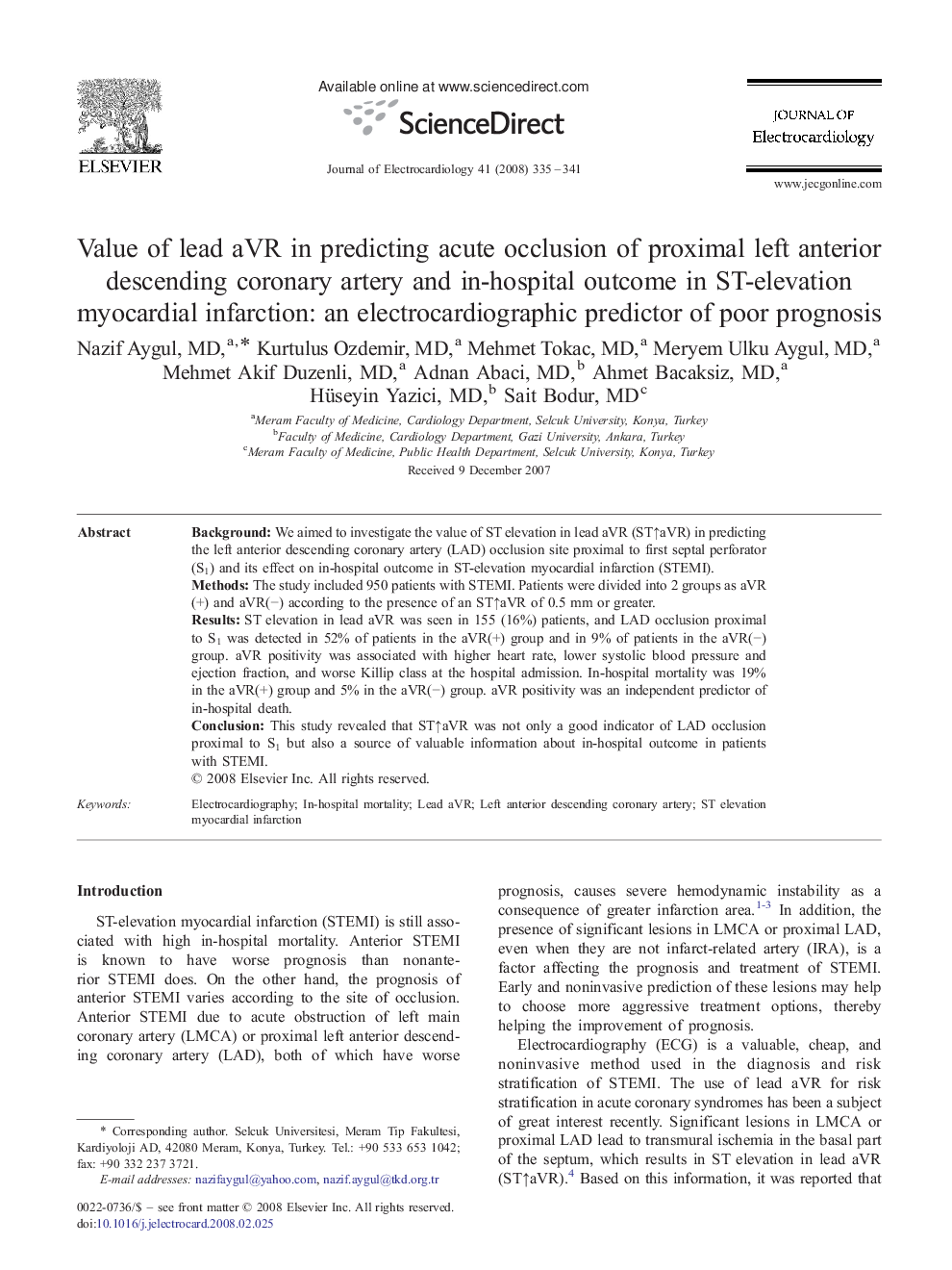| Article ID | Journal | Published Year | Pages | File Type |
|---|---|---|---|---|
| 2967831 | Journal of Electrocardiology | 2008 | 7 Pages |
BackgroundWe aimed to investigate the value of ST elevation in lead aVR (ST↑aVR) in predicting the left anterior descending coronary artery (LAD) occlusion site proximal to first septal perforator (S1) and its effect on in-hospital outcome in ST-elevation myocardial infarction (STEMI).MethodsThe study included 950 patients with STEMI. Patients were divided into 2 groups as aVR(+) and aVR(−) according to the presence of an ST↑aVR of 0.5 mm or greater.ResultsST elevation in lead aVR was seen in 155 (16%) patients, and LAD occlusion proximal to S1 was detected in 52% of patients in the aVR(+) group and in 9% of patients in the aVR(−) group. aVR positivity was associated with higher heart rate, lower systolic blood pressure and ejection fraction, and worse Killip class at the hospital admission. In-hospital mortality was 19% in the aVR(+) group and 5% in the aVR(−) group. aVR positivity was an independent predictor of in-hospital death.ConclusionThis study revealed that ST↑aVR was not only a good indicator of LAD occlusion proximal to S1 but also a source of valuable information about in-hospital outcome in patients with STEMI.
